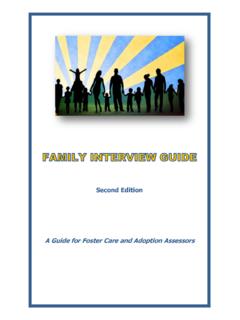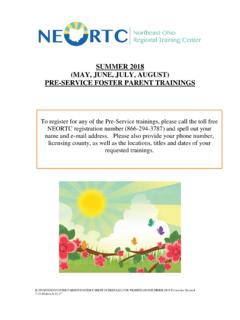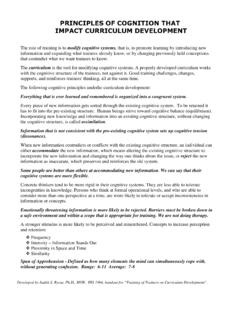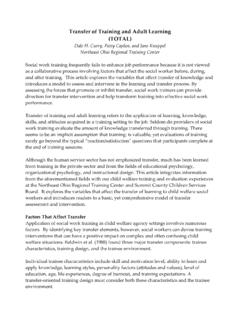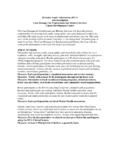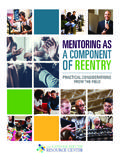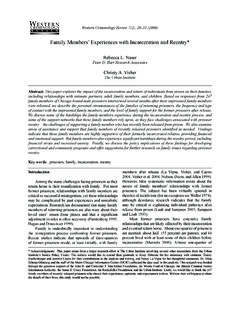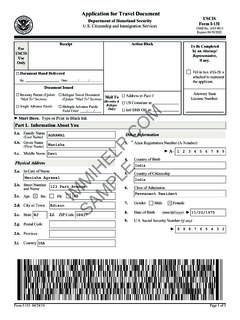Transcription of A systematic review of strategies to promote …
1 A systematic review of strategies to promote successful reunification and to Reduce Re- entry to Care for Abused, Neglected, and Unruly Children Final Report Presented to the Ohio Department of Job and Family Services Denise E. Bronson, MSW, Stacey Saunders, MSSA Mary Beth Holt, MSW Emily Beck, BSSW The Ohio State University College of Social Work May 2008 Page | ii A systematic review of strategies to promote successful Family reunification and to Reduce Re- entry to Care for Abused, Neglected, and Unruly Children Table of Contents EXECUTIVE SUMMARY ..V I. BACKGROUND ..1 A. ACCOUNTABILITY IN CHILD WELFARE B. OHIO CFSR C. CFSR DEFINITIONS OF reunification AND D. systematic review ON reunification AND II. PROBLEM III. THE systematic review QUESTIONS.
2 11 IV. PROJECT METHODOLOGY ..12 A. SEARCH B. C. review D. INCLUSION AND EXCLUSION E. ANALYSIS F. ASSESSING RESEARCH G. RELIABILITY CODING H. DESCRIPTION OF RETRIEVED 1. Total Number of reunification and Re- entry Articles 2. Number of Articles by Population Abused, Neglected and Unruly Youth ..25 3. Number of Articles by Rating on the Maryland Scale of Scientific Methods ..25 V. A. ANALYSIS OF THE EMPIRICAL 1. Experimental and Quasi-Experimental Studies ..28 a) Findings and Limitations of the Experimental and Quasi-Experimental Research ..35 2. Empirical, Non-Experimental a) Child Characteristics ..38 b) Parent/Family Characteristics ..39 c) Service Characteristics ..43 3. Program Models ..45 Page | iii a) Intensive Family Preservation/ reunification Services (IFPS) Models.
3 45 b) Recovery Coaches and Service Matching Program ..49 c) Early Intervention Foster Care (EIFC) Program (Oregon) ..50 d) Concurrent Planning e) Court-based f) Manatee Model (Florida)..52 g) Assessment and Treatment Model ..52 4. Qualitative Research ..59 B. ANALYSIS OF THE CONCEPTUAL 1. Theoretical Foundations and Assumptions ..61 a) Theoretical Foundations ..61 b) Family-Centered Approach ..62 2. Child and Family Factors ..62 a) Multi-problem families ..62 b) Substance c) Neglectful d) 3. a) Case Workers Behaviors ..65 b) Assessment ..66 c) Engaging Families ..66 d) Concrete e) Social f) Mental Health Services ..68 g) Skill h) Visitation ..69 i) Agency Factors.
4 70 4. 5. Summary of the Conceptual Literature review ..72 VI. SUMMARY AND A. ASSESSING THE AVAILABLE RESEARCH ON reunification AND B. WHAT INTERVENTIONS OR PROMISING PRACTICES APPEAR TO promote successful FAMILY reunification AND REDUCE THE LIKELIHOOD OF RE- entry TO CARE? ..75 C. WHAT FACTORS ARE ASSOCIATED WITH successful FAMILY reunification AND REDUCED RE- entry TO CARE? ..76 1. Pre- reunification 2. reunification Services ..77 a) Reducing Re- entry to Care ..77 b) Special Considerations for Unruly Children ..77 D. RESEARCH NEEDED TO DEVELOP MORE EFFECTIVE VII. FUTURE DIRECTIONS AND NEXT VIII. GENERAL REFERENCES AND RESOURCE MATERIALS ..81 Page | iv APPENDIX A ..84 ELECTRONIC DATABASES USED IN systematic APPENDIX B ..91 ARTICLES REVIEWED FOR THE systematic APPENDIX C.
5 142 FACTORS CORRELATED WITH reunification AND APPENDIX D ..147 ACCESS DATA ABSTRACTION Tables Table 1. CFSR Assessment Areas and Table 2. Ohio's Compliance with National Outcome Indicator Standards in 1st CFSR..5 Table 3. Definitions for reunification and Re- entry in 1st and 2nd Table 4. Stages of a systematic review ..10 Table 5. Search Questions..12 Table 6. Search Table 7. Keywords Used in Electronic Database Table 8. Maryland Scale of Scientific Methods (adapted from Sherman, 1998)..21 Table 9. Frequency of Maryland Scale Ratings..26 Table 10. Experimental and Quasi-Experimental Research on reunification and Table 11. Program Models for Improving reunification and Decreasing Re- entry to Figures Figure 1. Article review Process ..24 Page | v A systematic review of strategies to promote successful Family reunification and to Reduce Re- entry to Care for Abused, Neglected, and Unruly Children Executive Summary In 2003 the Children s Bureau ( Department of Health and Human Services) completed the first Child and Family Services Reviews (CFSRs) to assess each state s outcomes for children and families served by their child welfare system and to monitor the state s ability to deliver services to families.
6 During that review , Ohio was judged to be out of compliance on six outcome measures. Two of these are the focus of this report. The first focuses on the percentage of children who were successfully reunified with their parents within 12 months of out-of-home placement and the second measure addresses the percentage of children who re-entered out-of-home care within 12 months of reunification . Too few children were being reunified in a timely manner and too many were returning to placement after reunification . This systematic review was completed to provide an analysis of the available empirical evidence on services to increase successful family reunification and on strategies to reduce re- entry to care.
7 The search questions guiding the retrieval of relevant literature can be summarized as follows. 1. What interventions or promising practices appear to result in a) increasing successful family reunification and b) reducing re- entry to out-of-home care for abused, neglected, or unruly youth/children? 2. What factors are associated with successful family reunification and what factors are associated with re- entry to care? 3. What research is needed to develop more effective interventions for successful family reunification and to reduce re- entry to care following reunification ? The search of published and unpublished materials satisfying the inclusion criteria produced 800 articles for the initial review . Ultimately, 71 empirical articles (6 were of experimental or quasi-experimental studies) met all the inclusion criteria and were included in the review .
8 To supplement the systematic review of the experimental and quasi-experimental studies, empirical literature such as correlational and qualitative research, and non-empirical, conceptual articles were also reviewed for relevant themes and variables for future research. The limited number of rigorous research studies (experimental or quasi-experimental research) on reunification and re- entry to care made it impossible to draw Page | vi definitive conclusions on the effectiveness of existing reunification programs. However, an analysis of the entirety of the available empirical research identified numerous program models and factors that are associated with successful family reunification . Some of the critical components of services to support successful reunification and to reduce re- entry include: 1.
9 Pre- reunification Services Assess parental ambivalence about the reunification and reunification readiness similar to that included in the North Carolina Family Assessment Scale for reunification (NCFAS-R) and address issues that are identified. Prepare a detailed service plan for families. Actively engage parents and involve parents in case planning; arrange regular contact between the parents and the child. Schedule regular home visits for the child. Identify family needs and match them with available community services prior to reunification . Provide parenting skills training to prepare parents to deal with behavioral difficulties exhibited by their child. Develop training programs for workers on how to engage parents. Work collaboratively with parents, children, kinship caregivers, and foster parents to prepare for reunification .
10 2. reunification Services Offer intensive, in-home services (described earlier) with low worker to family ratios. Match services to client-identified needs for individualized programming. Offer multi-component services to address the complex issues presented by family reunification . These would include mental health services for the parents and children, stress management support, concrete services (housing, financial, job, transportation), substance abuse programs, counseling, and homemaker assistance. Anticipate family issues and provide preventive services based on pre- reunification assessments of family strengths and needs. Services should be in place at the time of reunification to prevent the need for re- entry to care. Provide special health care services for children with health needs such as respite care, nurses and aides, and social supports.
